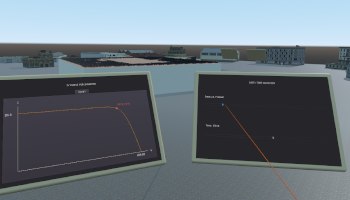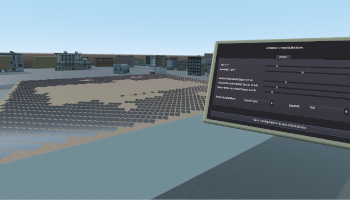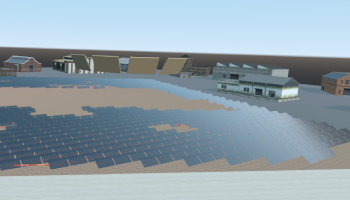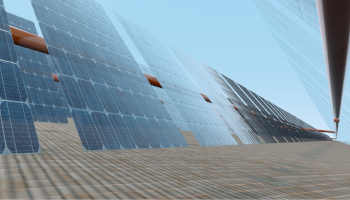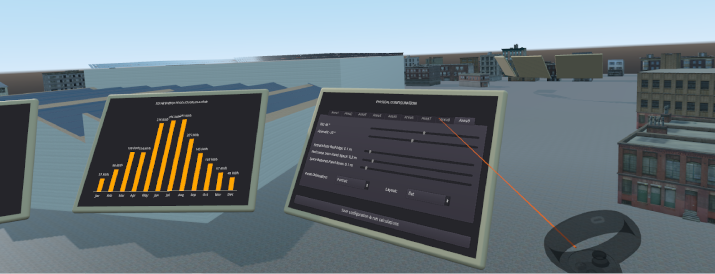
An immersive learning experience on photovoltaics for higher education was realized in a virtual reality application.
Virtual Reality, Godot, C#, REST API, Observer & Singleton Pattern, Photovoltaics, Immersiveness, Learnability, Memorability, User Interaction Design in VR, Usability & User Experience
Goal of this project was to create an immersive ’Virtual Physics Laboratory’. Students should be able to conduct experiments that are not possible in a conventional learning environment. For that purpose, two experiments in the field of photovoltaics have been elaborated by the customer, one to understand the electrical configuration of a photovoltaic installation and the second to analyse the impact of physical configuration options.
This project was done in collaboration with an ongoing master project, whose focus was on the implementation of the collaboration between a desktop and virtual reality user. State-of-the-art 3D technologies were to be used to create engaging content and facilitate memorable learning gains.
Both experiments for the electrical and physical configurations have been fully integrated into the immersive learning experience. With the aid of state-of-the-art C# libraries and suitable utilization of the observer and singleton patterns, a robust yet easily extensible REST API and state management has been implemented. Computational extensive physical calculations are run on the server side. Consequently, user adjustments to the electrical and physical configurations of a photovoltaic installation can be shown a few seconds later directly in front of the user, while the virtual reality application stays responsive on a higher-end gaming laptop.
A user study including a task-based usability test and a follow up questionnaire has been conducted with five co-workers. It was observed that individual participants could use different approaches to solve the given tasks. The virtual reality controls such as teleportation, grabbing and user interface interactions were perceived as intuitive. First-time users internalized those quickly and used them with confidence. An average System Usability Scale score of 80.5 was given by these five testers. All of them stated that this learning experience allowed them to learn something new in a fun and interactive way. Moreover, due to the hands-on experience and the spatial exploration of a photovoltaic installation's configuration, this experience was believed to be more memorable in comparison to traditional learning methods.
| Project Type | Duration | Expenditure | Team Size |
|---|---|---|---|
| Bachelor Thesis | September 2020 - March 2021 | 500+ hours | 1 Person |
Prof. Dr. Renato Minamisawa
Physics Laboratory FHNW
Tobias Kaufmann
tobias.kaufmann2@students.fhnw.ch
Prof. Dr. Arzu Çöltekin
Marco Burri
